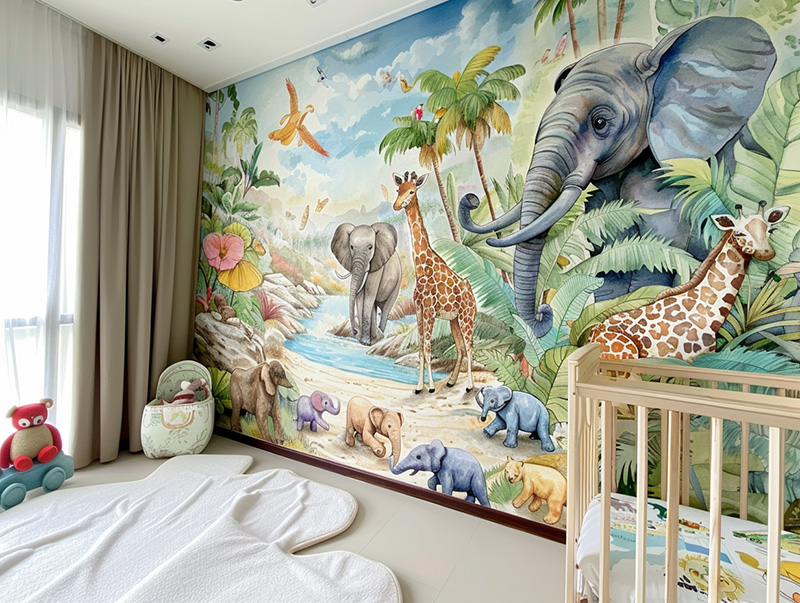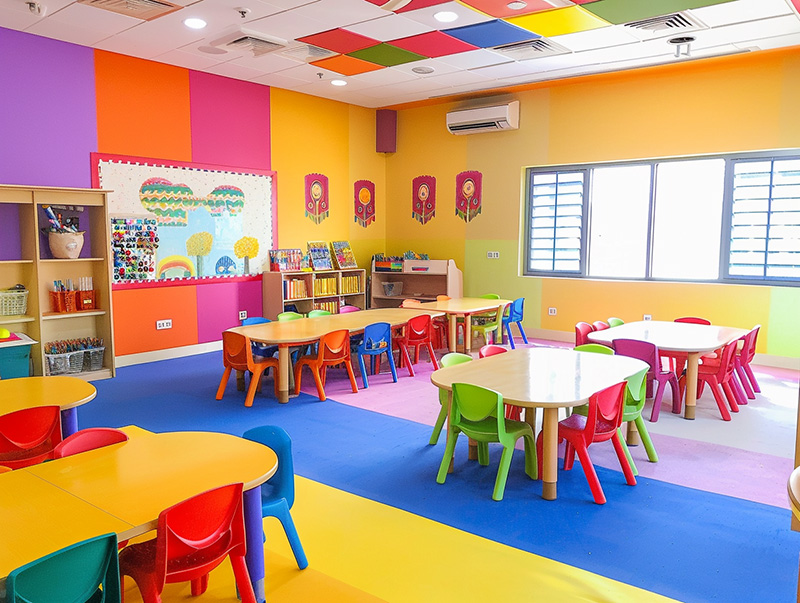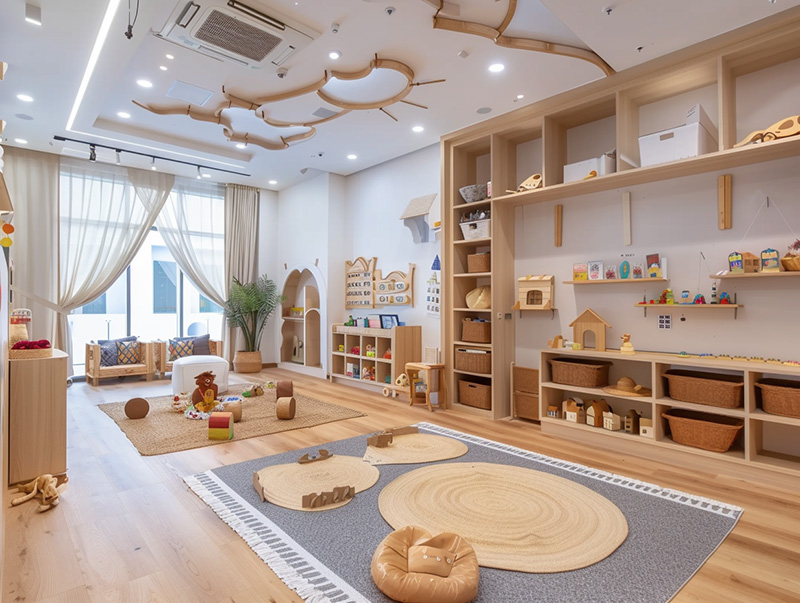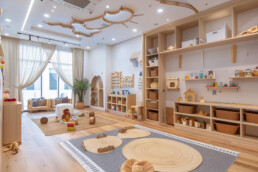Nurturing young minds is an art form, a delicate dance of creating an environment that not only stimulates but soothes, an environment where colors whisper stories and paint emotions. Enter the realm of nursery decor, where every hue holds the power to shape a child’s world. Imagine a space where walls don’t just enclose but embrace, where furniture isn’t merely functional but a symphony of shades. This blog post delves deep into the fascinating world of color psychology, exploring how a carefully curated palette can work wonders in influencing the mood and behavior of little ones. In Dubai’s vibrant educational settings, the importance of understanding the impact of color psychology in nursery decor cannot be overstated. From calming blues to energizing yellows, each color has its role to play in creating a nurturing and stimulating environment for young minds to flourish. Join us on a journey through the intricacies of color psychology as we uncover the secrets behind crafting a space that not only sparks joy but also cultivates positive behaviors in children. Let’s unlock the potential of hues and shades in shaping not just spaces, but futures.
 The Fundamentals of Color Psychology in Nursery Decor
The Fundamentals of Color Psychology in Nursery Decor
Color psychology is the study of how colors can affect human emotions, behaviors, and moods. When it comes to nursery decor, understanding the fundamentals of color psychology is essential in creating a space that promotes a positive and nurturing environment for children. Each color has its unique characteristics and influences, making it crucial to choose the right hues for your little one’s room.
One of the first considerations when selecting colors for nursery decor is the overall mood you want to create. For instance, if you aim to establish a calm and peaceful atmosphere, opting for soothing blues would be an excellent choice. Blue has been proven to have a calming effect on individuals, making it ideal for creating a serene oasis where your child can relax and unwind.
Another essential aspect of color psychology in nursery decor is understanding how different colors can stimulate creativity. Vibrant yellows and oranges are known to evoke feelings of happiness, energy, and enthusiasm. These warm tones can help inspire creativity and imagination in young minds. Incorporating these colors into play areas or art corners can encourage your child’s artistic abilities while also providing them with an environment that sparks joy.
Creating a Calm Oasis with Soothing Blues
When it comes to promoting relaxation and tranquility in your child’s nursery, few colors can rival the calming effects of blues. Shades like sky blue or pastel turquoise have been shown to reduce anxiety levels and promote restful sleep. By incorporating these hues into your nursery decor through wall paint, bedding, or accessories, you can create a soothing oasis where your little one feels safe and at ease.
In addition to using blues as the dominant color in the room, consider complementing it with softer neutrals like whites or light grays. This combination creates a harmonious and balanced ambiance, further enhancing the calming effects of the space. Remember to choose furniture and decor that align with the overall color scheme to maintain a cohesive and serene atmosphere.
Stimulating Creativity with Vibrant Yellows and Oranges
If you want to foster your child’s creativity and imagination, incorporating vibrant yellows and oranges into their nursery decor is a great choice. These warm tones are known for their ability to evoke feelings of happiness, energy, and enthusiasm. By surrounding your child with these colors, you can create an environment that sparks their creativity and encourages them to explore their artistic side.
Consider using yellow or orange accents in areas dedicated to play or learning. This could include a vibrant rug, colorful storage bins, or even a feature wall painted in a bold shade. These pops of color will not only stimulate your child’s imagination but also create an inviting space where they can engage in creative activities.
Instilling Serenity and Balance with Greens
Green is often associated with nature, growth, and harmony. Incorporating shades of green into your child’s nursery decor can help create a sense of serenity and balance. Green has been shown to have a calming effect on individuals while also promoting feelings of freshness and renewal.
You can introduce green into the nursery through elements such as plants or botanical-themed wallpaper. Not only will this add visual interest to the space, but it will also contribute to improved air quality by naturally purifying the air. Additionally, using natural materials like wooden furniture or bamboo accents can further enhance the connection with nature.
Encouraging Focus and Clarity with Purples
Purple is often associated with spirituality, wisdom, and creativity. When used in nursery decor, it can help promote focus and clarity in children. Lighter shades of purple, such as lavender or lilac, have a calming effect and can aid in concentration.
Incorporate purple into your child’s nursery through bedding, curtains, or accent pieces. Avoid using dark or intense shades of purple, as they may have the opposite effect and create a sense of restlessness. By carefully selecting the right shade, you can create a space that encourages your child to focus and engage in activities that promote learning and development.
Balancing Energy and Tranquility with Neutrals
Neutrals play a crucial role in nursery decor as they provide a balance between vibrant colors and create a sense of calmness. Shades like white, beige, or light gray can help ground the overall color scheme while allowing other hues to shine.
Using neutrals as the base color for walls and furniture provides versatility in terms of accessorizing and allows you to change the room’s theme easily as your child grows. Neutrals also provide an excellent backdrop for showcasing colorful artwork or decorative elements that can be easily swapped out over time.
Harnessing the Influence of Color Combinations
While individual colors have their own psychological effects, understanding how different colors work together is equally important in nursery decor. Combining complementary colors can create a harmonious balance while contrasting colors can add visual interest and stimulate cognitive development.
For example, pairing blue with yellow creates a complementary color scheme that balances calmness with energy. This combination can be used in various ways throughout the nursery, such as using blue walls with pops of yellow in furniture or accessories.
On the other hand, contrasting colors like green and red can be used to stimulate cognitive development by creating visual stimulation. Incorporating these contrasting colors through wall art or rugs can engage your child’s senses and promote their cognitive abilities.
In conclusion, color psychology plays a significant role in nursery decor, influencing children’s mood and behavior. By understanding the fundamentals of color psychology and carefully selecting the right hues, you can create a nurturing environment that positively impacts your child’s development. Whether it’s creating a calm oasis with soothing blues or stimulating creativity with vibrant yellows and oranges, each color has its unique power to shape your child’s world. So embrace the influence of colors in nursery decor and watch as your little one thrives in their beautifully designed space.
Related Posts
1 mai 2024
The Role of Nature-Themed Decor in Stimulating Development in Nurseries
As we step into the enchanting world of…
1 mai 2024
Creating Calming Spaces for Children in Dubai Nurseries
Nurturing tranquility within nursery…





